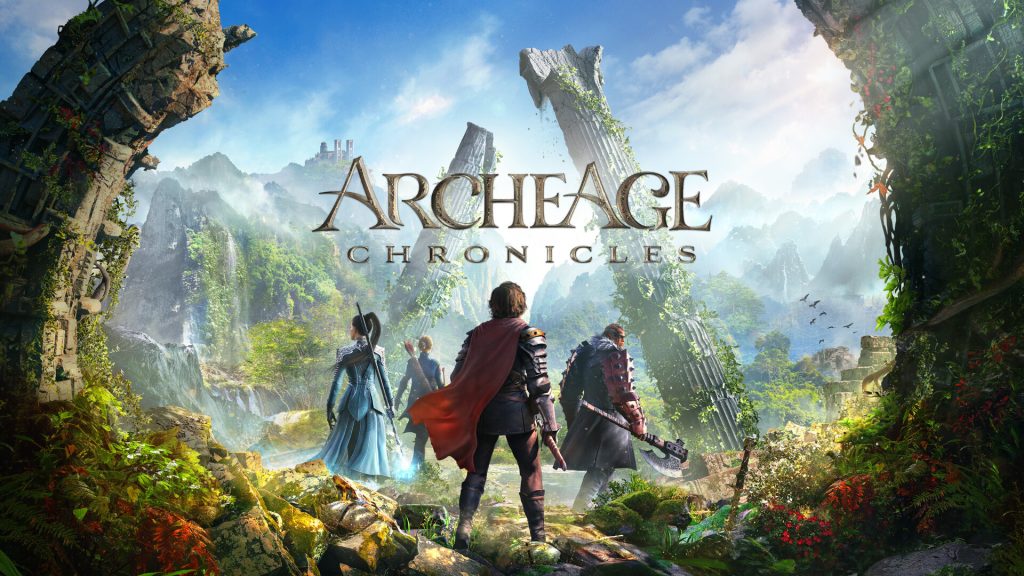The wind over Auroria tastes like old stories and new promises. Lanterns sway on a makeshift pier, and beyond the breakers you can see the silhouettes of airships and caravans edging toward a land that was legend for a long time. ArcheAge Chronicles brings that frontier mood back to life with a sharper edge, built by XLGAMES and published by Kakao Games. It is an online action RPG in the ArcheAge universe, tuned for discovery, fast combat, and player driven systems. For an official overview and platform details, see the Official Steam page.
The pitch in one breath
ArcheAge Chronicles is a shared world MMO action RPG set in Auroria, rebuilt in Unreal Engine 5 and framed around a more immediate combat feel. It carries forward the series DNA of lifeskills, housing, trade, and a player influenced economy, while reshaping pace and systems to welcome both solo explorers and small groups. The studio positions it as a fresh chapter rather than a straight sequel, with a tighter focus on action, discovery, and readable goals across PC, PlayStation 5, and Xbox Series. The reveal framed a move away from massive zerg play toward moments that feel personal and coordinated rather than chaotic, without losing the sense of a living world.
How it ties to classic ArcheAge
You can see the lineage right away. Housing returns as a pillar rather than a side note. Crafting, farming, hunting, and trade sit inside the progression loop, not on the fringe. The big shift is in how those systems meet combat and exploration. Chronicles leans into a true action model with dodges, parries, weapon swaps, and build choices you feel on every pull. That choice alters daily rhythm. You spend less time on rotating skill bars and more time reading the field, cutting angles, and cashing in a clean punish window. The net result is a game that still speaks the language of ArcheAge, but it says each line with fewer syllables and more intent. The lead voices at XLGAMES describe this project as a new story and a new format for the world fans already know, with discovery first and bloat trimmed back in favor of flow, as outlined in the Producer’s letter.
Story setup and tone
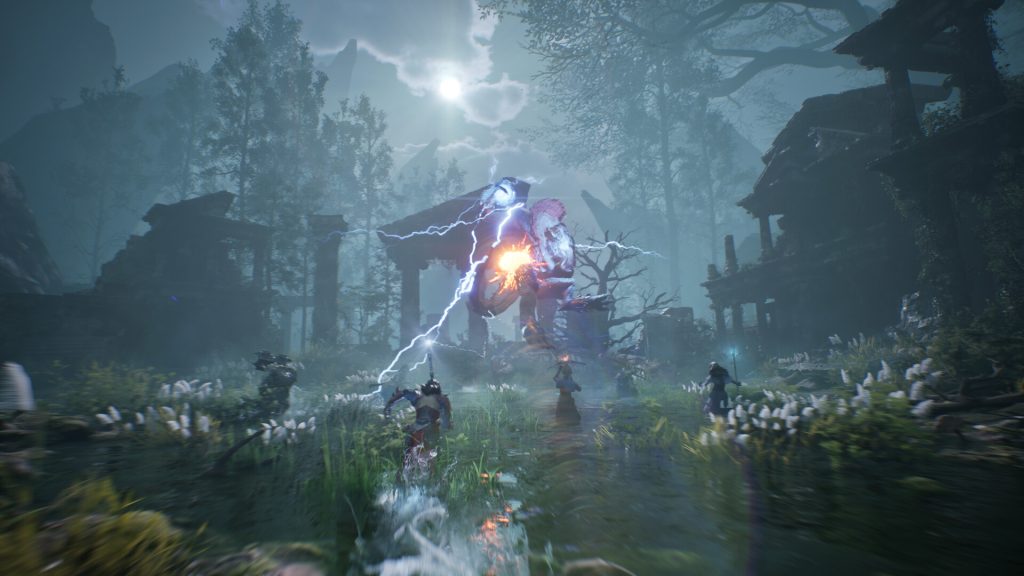
Chronicles takes place during the rediscovery of Auroria. The era is called the Age of Pioneers, and that name sets the tone. You arrive as a seasoned explorer tied to a trading company with a mandate to make sense of a land that does not give up answers easily. Early beats send you through ruined sites, an airship crash with wider consequences, and a web of motives that pull at the edges of every faction you meet. The cast is built to be read through action. People carry secrets, goals, and short tempers. Some will help for a price, some will hinder out of pride, and some will test you because that is what Auroria does to anyone who shows up unprepared. The narrative promises long arcs but starts on grounded problems that one player can grasp in a night.
World, exploration, and lifeskills
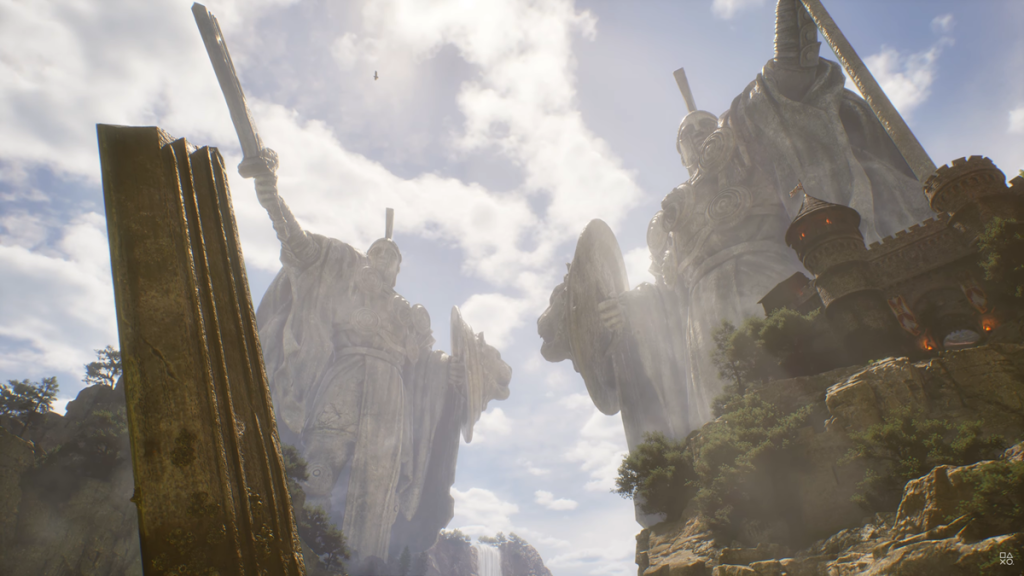
Auroria is pitched as a seamless open world with clear regions, thick mood, and visible purpose. The studio calls out a discovery first approach. You learn by following signs in the landscape rather than chasing a string of markers. That rhythm suits the series. The world is not just a backdrop for combat. It is a place you read with your feet and your tools. Lifeskills support that loop. Hunting feeds crafting. Gathering lines up your next upgrade. Farming and housing give the map places where your story rests between trips. Trading ties regions together and makes travel feel like work with a reward. The world earns your time because the systems connect, not because a checklist says so. The Developer diary frames this shift as a way to let curiosity set the route.
Combat that answers your hands
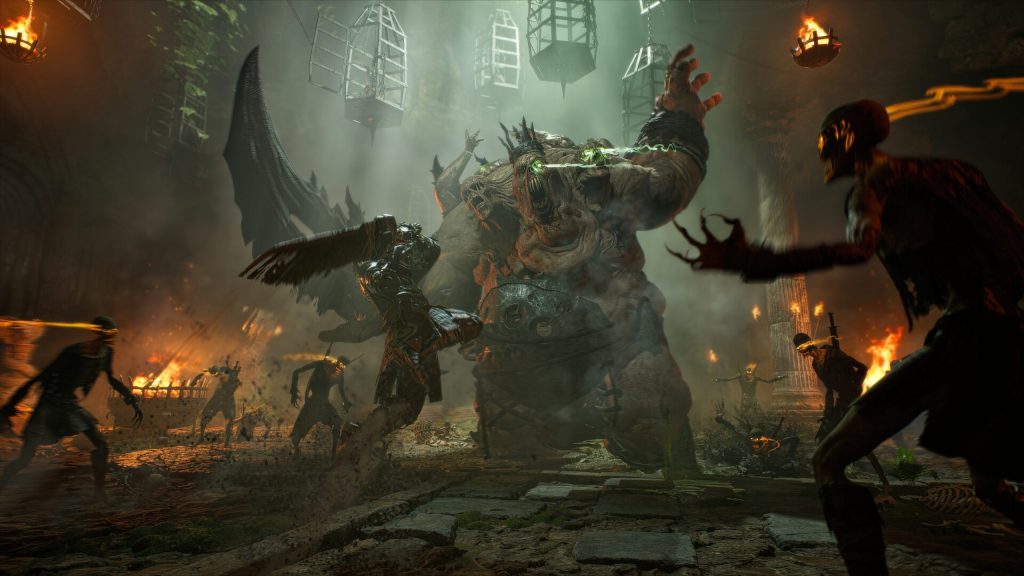
Chronicles centers on fluid action combat. You choose a weapon and a kit, then you fight through a model that sells each decision with fast feedback. You jump, fall, roll, dash, block, and parry. Melee builds carry risk and reward through spacing and guard timing. Ranged builds lean on aim, mobility, and resource windows. Magic kits speak in area control, status, and burst. The studio emphasizes builds that feel distinct without turning into homework. That means the core loop is readable at a glance, but there is headroom to grow once you start aligning cooldowns, weapon synergies, and encounter rhythm. Even a simple dodge into a counter swing lands like a small story beat when the camera and audio line up. That is the point here. The system pays you back in the same second you make a smart move.
PvE pillars and weekly rhythm
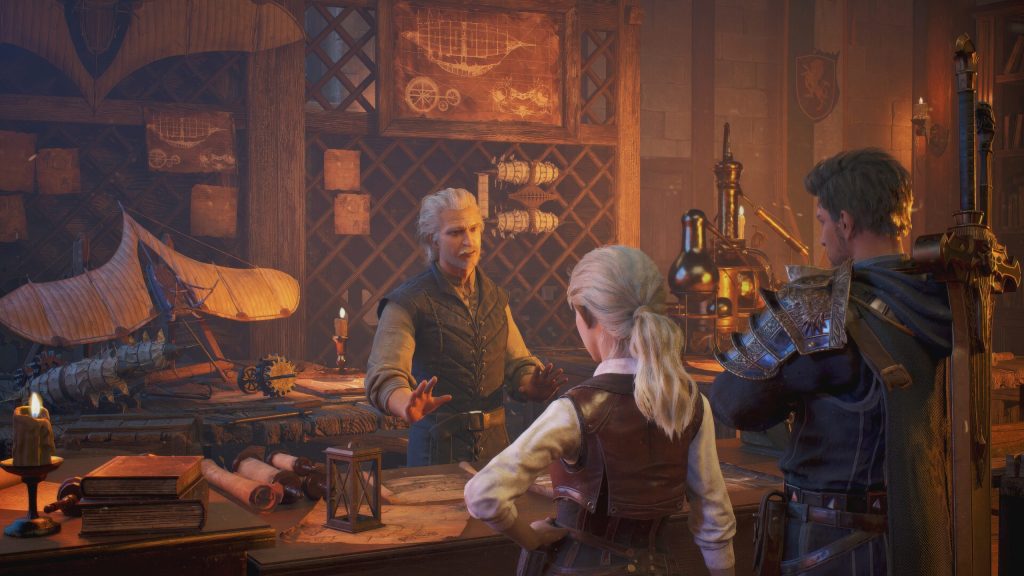
Players can expect a mix of story content, open world events, instanced boss fights, and raids. The studio calls out party play and twenty player raids alongside solo viable routes for much of the PvE outside the main narrative. The cadence is set to keep a week busy without drowning you. Open world raid bosses pull ad hoc groups into motion. World events add pressure or incentives to regions that would otherwise be quiet. Instanced encounters escalate mechanics rather than only health and damage, which helps returning players get their legs back without feeling lost. That pattern lines up with the team’s stated plan to make room for short sessions, longer nights, and steady goals in between, as outlined in the Developer diary.
PvP, risk, and the frontier feel
Trade runs are built to be more than delivery errands. The official notes describe routes through dangerous territory, variables added to transport, and the expectation that risk rises with rewards. That is where PvP enters the frame. The team mentions a crime system under review and organized PvP activities, including an arena setting like a colosseum. The aim is clear. Make conflict a lever that players pull when the stakes feel right, rather than a blanket rule that turns all travel into a coin flip. That balance suits a pioneer theme. When a run goes clean, it is because your pathing, escort, and timing were smart. When it goes bad, you have a story and a plan for the next time. The Producer’s letter also stresses smaller group focus, which should keep skirmishes readable.
Progression, builds, and economy
Progress lives in your kit and in the world you shape. Recipes unlock new branches of gear and tools. Crafting ties directly to character growth rather than sitting off to the side as a separate track. Housing is framed as a real social space, not just a storage shed. Trade connects the economy back to your routes on the map, which makes every region feel like it has something specific to give. The studio highlights build diversity through weapon and skill choices rather than through an opaque pile of passive systems. You should feel a change in your hands when you pick a new trait or swap a weapon. You should see that choice pay off in the next pull, the next route, or the next crafting session.
Platforms, service status, and version notes
ArcheAge Chronicles is planned for PC via Steam and Epic Games Store, PlayStation 5, and Xbox Series. The Steam page lists supported languages and calls out online co op and online PvP features. The store description frames it as a shared online world with MMO features and action RPG combat, built on Unreal Engine 5. Release timing on the store is listed as to be announced, and the reveal context points back to a State of Play showcase. The publisher and developer are Kakao Games and XLGAMES, respectively. For a full snapshot of features, media, and language support, see the Official Steam page.
System requirements
| Tier | OS | CPU | Memory | GPU | Storage |
|---|---|---|---|---|---|
| Minimum | Windows 10 64 bit | Intel Core i5 12400 or Ryzen 5 5600 | 16 GB RAM | GeForce RTX 3060 Ti | 100 GB |
| Recommended | Windows 11 64 bit | Intel Core i7 12700 or Ryzen 7 5700X | 32 GB RAM | GeForce RTX 4060 Ti | 100 GB |
These numbers set a clear bar. The game targets modern CPUs with strong single core performance and mid to upper mid range GPUs for the recommended line. Storage needs reflect a large open world build.
Developer commentary

XLGAMES has been open about the goals behind this project. The team positions Chronicles as a new story set in Auroria rather than a direct sequel. They describe a pivot toward discovery led play, with fewer signposts and more reasons to read the world. They also frame combat as a rebuild from the ground up to bring single player action clarity into a shared online space. The developers call out room for both solo play and group content, including party activities and twenty player raids, and they highlight the return of lifeskills, housing, and trading with deeper hooks into character growth and the world economy. For tone and direction straight from the studio, read the Producer’s letter and the Developer diary.
Similarities and differences at a glance
The bones of ArcheAge are here. You will build, trade, and shape a life that lives between fights. You will also see real changes. Combat is more tactile. Group sizes shrink where that makes the experience cleaner. Exploration leans into secrets and environmental cues rather than a chain of icons. PvP still exists, but it is pulled into systems where risk feels earned and rewards feel personal. That balance is meant to cut down on pointless friction while keeping the world dangerous in the right places. It also opens space for console play, where action readability matters and shorter sessions still pay off.
For newcomers to the series
You do not need a decade of history to feel at home here. The narrative starts with a clear job and escalates in digestible steps. The world rewards curiosity. If you like action combat with real movement and feedback, you will get that from your first weapon. If you like building a life between fights, lifeskills and housing give you reasons to log in that do not require a raid calendar. Trade runs with friends tell their own stories, and the risk is part of the thrill. Start small, learn a route, then add a layer each night until Auroria feels like your map.
Closing thoughts
ArcheAge Chronicles is built to bring back the frontier feel of Auroria and carry it forward with modern clarity. It keeps the heart of the series alive in housing, lifeskills, and trade, then stitches those systems to action combat that reads in a heartbeat. The studio’s notes show a team that wants discovery and agency to set the pace. If you loved ArcheAge, you will recognize the intent. If you missed it the first time, this format looks ready to meet you where you play now.
